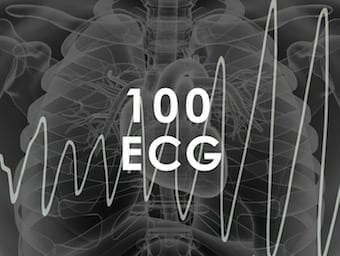
ECG Case 126
A man in his 40s is brought in GCS 3. Can you interpret these ECG and echo abnormalities to appropriately guide management?

A man in his 40s is brought in GCS 3. Can you interpret these ECG and echo abnormalities to appropriately guide management?

With worked examples in the next three posts, we look at ways to recognise early ECG features of OMI before waiting for a "STEMI" to evolve

A 24-year-old female presents following a syncopal episode. This case incorporates basic bedside echo into our ED work-up of syncope.

A 78-year-old man presents following a self-resolved episode of right axillary pain. Add this characteristic ECG pattern to your list of spot diagnoses.

With a great case example, we discuss diagnosing OMI in the presence of intraventricular conduction delay and/or prior anterior myocardial infarction

This characteristic ECG pattern should be in every critical care practitioner's knowledge base as a STEMI-equivalent, regardless of the magnitude of ST-segment changes seen

Can you predict this patient's potassium? Patients with this syndrome may not exhibit the typical ECG features of hyperkalaemia beyond bradycardia

A 34-year-old man presents with palpitations and a regular broad complex tachycardia. Would you give adenosine?

31 yr old female who is 5 days post-partum she was brought to the Emergency Department following a episode of collapse. Describe and interpret this ECG. LITFL Top 100 ECG

ECG from a 19 yr old referred by their GP for investigation of palpitations found at a routine medical review. The patient is asymptomatic with no past medical history or regular medications. Describe and interpret this ECG

23 yr old male bodybuilder presented following a 30 minute episode of non-exertional chest pain. Describe and interpret this ECG. LITFL Top 100 ECG

54 year old lady attends with 2 month history of 'chest flutterings'. Describe and interpret this ECG. LITFL Top 100 ECG